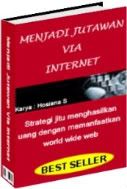Purpose of the interviewing
Developing relationships
The major purpose of interviewing a client before performing the physical examination is obtain a health history . practitioner must be skillful in communication techniques to enable a client to fully share life experience relevant to his or his health status. When the initial interview is problem focused, the practitioner also ask about the signs and the symptoms associated with the client's problems or concerns.
understanding of the purpose of the interview, and address the client by his or her full name or surname.
Another way to promote trust and acknowledge the client as an active participant in the interview is to ask about the client's primary concerns and goals for the visit. Use communication skills that create a climate in which the client feels free to talk about his or her health condition. These strategies are necessary for obtaining the most reliable data about both the client's physical and mental status.
Contracting
The initial interview is the basis for establishing a client provider contract. Contracting is an agreement between the provider and client that makes explicit the expectations of each party. For example, the provider might state that in order for the client to receive appropriate preventive care, the client will agree to make an appointment at least yearly. The client is then encouraged to respond to this. It is not necessary to label this a "contract," but it is important for the client and provider to agree on the plan and modify it as needed.
Sometimes contracts are written, but must often they are verbal agreements. Written contracts are often useful when using behavior modification techniques for dealing with behavior changes such as smoking cessation or medication taking.
Timing is important when the examiner introduces discussion of a contract. Allow enough time so that you arid the client have exchanged introductions and you
have some awareness )f the client's needs and purpose of tile visit. However, it is, important not to wait until the very end of the visit to discuss, a plan of care or treatment. Adequate time ,should be available for negotiation any modification to the course of action or plan based on the client response.
Modifications in the Interview
The interview will be modified by the age of tile client, the reason for the visit, and the existing relationship between you and the client. A young child will be accompanied by a parent or adult who will be the major Source of information. It is important to remember that although the adult may be providing the verbal information, the child needs to feel included in the interview. Introduce yourself to the child, ask the child questions, and let the child touch equipment. Adults may also prefer to have a family member or significant other with them during a health visit. Confirm with the client that he or she chooses to have another person present and acknowledge the presence and concerns of the family member or significant other.
On the first visit with a client who is being seen for a general health assessment, allocate a considerable amount of time for the interview and history. This allows you to obtain baseline data and develop a relationship with the client. When you see a client who has an acute problem, less time is focused on past history and greater emphasis is placed on understanding the immediate problem. An established practitioner who has known a client and/or tile family members over many years may be quite familiar with many aspects of the client's health status and may need a shorter amount of time for a visit. however, a Provider in this situation will need to periodically and systematically update history information.
Browse » Home » » INTERVIEWING SKILL AND TEHNIQUE
Minggu, 16 Maret 2008
INTERVIEWING SKILL AND TEHNIQUE
Langganan:
Posting Komentar (Atom)





Comments :
0 comments to “INTERVIEWING SKILL AND TEHNIQUE”
Posting Komentar